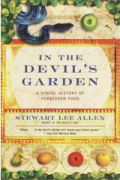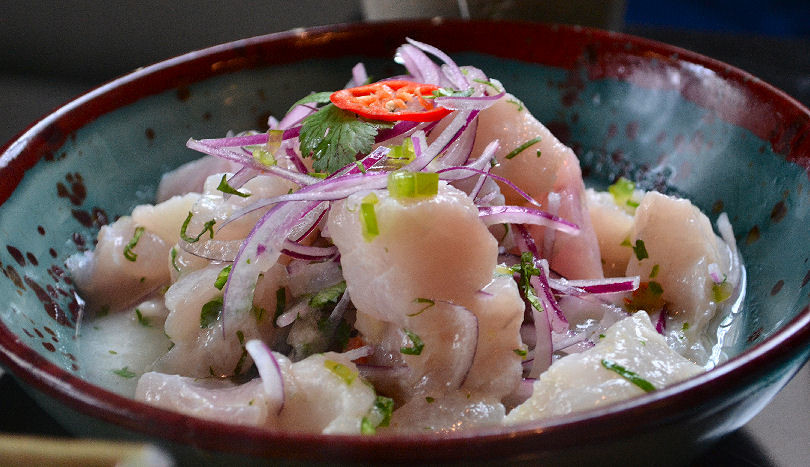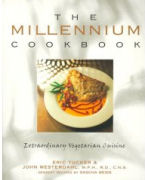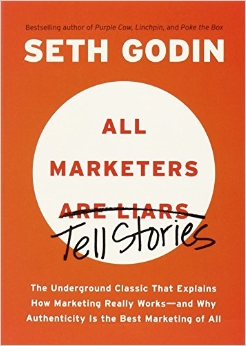 Baltimore – I just finished the book In the Devil’s Garden: A Sinful History of Forbidden Food by Steward Lee Allen (Ballantine Books, 2002). I love stuff like this. History, speculation, romance, and a bit of comedic relief, and it’s all about my favorite topic – food! The book is an exploration into food taboos, both current and historical, and a look at where they came from, and the results of varioius laws, edicts, codes, and other such attempts to regulate their ingestion.
Baltimore – I just finished the book In the Devil’s Garden: A Sinful History of Forbidden Food by Steward Lee Allen (Ballantine Books, 2002). I love stuff like this. History, speculation, romance, and a bit of comedic relief, and it’s all about my favorite topic – food! The book is an exploration into food taboos, both current and historical, and a look at where they came from, and the results of varioius laws, edicts, codes, and other such attempts to regulate their ingestion.
Let me start with my few minor quibbles about the book. The book is divided into basically seven chapters, one for each of the usual seven deadly sins. Mr. Allen starts each chapter with a menu made up of either pseudonymed items or commonly named items with oddball descriptions – all in an attempt to humorously lead into each sin and the specific subject matter of that chapter. He’s far more amusing when he strings sentences together – for the most part the menus come across as juvenile attempts to entertain. He has a tendency to use “common knowledge” as fact – the most noticeable one for me was when he launched into an exploration of some of the kosher dietary laws. Two in particular stood out, let me take them one at a time.
He states that in Leviticus (Old Testament, or Torah, for those not up on these things) there is a prohibition against the mixing of meat and milk, and claims it was even part of the original ten commandments. First off, there is no such prohibition in Leviticus (I’ll get to that in a moment), and second, the latter claim is complete speculation. The actual statement in the bible translates as “Thou shalt not seethe a kid in his mother’s milk.” Literally that means that you are prohibited from boiling a young goat in it’s own mother’s milk. This goes along with other prohibitions about not killing a kid on the same day as it’s own mother. The kosher dietary law against mixing meat and milk came in much later in history, and was a rabbinical prohibition in the Talmud, (specifically the Mishnah) or commentary on the Torah, not a “divine” one. It was based on the biblical statement as an attempt to expand upon God’s intentions in the matter. Second, the original statement doesn’t appear in Leviticus (and therefore the kosher laws) at all. It appears twice in the bible, Exodus 34:26 and Deuteronomy 14:21.
The second one he tackles is the prohibition against eating pork. He meanders with this one and cites all sorts of various claims, most of which have been shown to be questionable. While I won’t claim that all scholars agree on where this one came from, there has seemed to be a settling towards an explanation he doesn’t even bother with (surprising, since much of this book goes into the politics of food taboos), which is political. The Jews, at the time, were living amongst, if I’m remembering my studies well, the Canaanites. These folk were major in the pig trade, in fact, they pretty much were the pig trade in the middle east. The leaders of the jewish folk were out to make sure that their people didn’t intermingle – socially, sexually, or even commercially – thereby maintaining a separate identity. Banning any contact with pigs, and making the punishments be both corporal and capital, was a shrewd political maneuver to accomplish their goals.
Those two examples popped up mostly because of my personal religious studies when younger, so they stood out. I wouldn’t be surprised if folks who have training in other areas were to find similar gaffes in other parts of the book.
Now, all that said… I loved this book! It is an entertaining and thoughtful read. It is well written, with some wonderful turns of phrase, good pacing, and overall, damned amusing. It is obviously researched in depth, and whole worlds of both local traditions and scholarly pursuit are brought into the discussion. It was “worldly” in the sense that it covered cultural taboos across the globe. The division into Western culture’s “seven deadly sins” is perhaps a hometown conceit, but the categories are recognizable enough, even if not universal, that anyone can follow them. Oh, and last… kudos to the publisher – the font used is beautiful, and has just enough of an exotic styling to add to the whole feel of the book.
This is the second book in a similar vein that Mr. Allen has written, the first being an exploration into the history of coffee, The Devil’s Cup, which has now moved onto my reading list.





 The new “recruitment” poster for the Catholic priesthood, featuring 28-year old Father Jonathan Meyer ready to fight the forces of evil. He got the idea after seeing a sketch during seminary that pitted a group of older priests battling Satan in martial arts fashion. The poster is being given out to teens everywhere in hopes that it will entice them into the priesthood; and thousands of those teens are grabbing them up. Well, certainly a sexy poster of a priest hanging on their walls will entice teens into something.
The new “recruitment” poster for the Catholic priesthood, featuring 28-year old Father Jonathan Meyer ready to fight the forces of evil. He got the idea after seeing a sketch during seminary that pitted a group of older priests battling Satan in martial arts fashion. The poster is being given out to teens everywhere in hopes that it will entice them into the priesthood; and thousands of those teens are grabbing them up. Well, certainly a sexy poster of a priest hanging on their walls will entice teens into something. 
 The first book I opened is the cookbook from the chef and staff of the Millennium restaurant in San Francisco. Aptly enough, not only for the restaurant but for the age we’re living in, the book is called The Millennium Cookbook; Extraordinary Vegetarian Cuisine. And it is. Extraordinary. First, the book is beautifully designed. Eye-catching photos, both color and sepia-toned, are liberally placed throughout the book. The graphic layout and color choices for text are equally enticing. Secondly, the book is a pleasure to read. The authors start by noting that their readers undoubtedly have different motivations for picking the book up – and all are equally valid.
The first book I opened is the cookbook from the chef and staff of the Millennium restaurant in San Francisco. Aptly enough, not only for the restaurant but for the age we’re living in, the book is called The Millennium Cookbook; Extraordinary Vegetarian Cuisine. And it is. Extraordinary. First, the book is beautifully designed. Eye-catching photos, both color and sepia-toned, are liberally placed throughout the book. The graphic layout and color choices for text are equally enticing. Secondly, the book is a pleasure to read. The authors start by noting that their readers undoubtedly have different motivations for picking the book up – and all are equally valid.  The second book I approached with trepidation. Heaven’s Banquet; Vegetarian Cooking for Lifelong Health the Ayurveda Way already had the ring of dogma and brown, mushy food. Happily, my fears were unwarranted. The book certainly contains whole sections devoted to spirituality and vegetarian cuisine, and it is peppered with quotes and quips from spiritual texts. However, there is an easy-going, at times almost tongue-in-cheek approach to the presentation of the food and its relationship to life.
The second book I approached with trepidation. Heaven’s Banquet; Vegetarian Cooking for Lifelong Health the Ayurveda Way already had the ring of dogma and brown, mushy food. Happily, my fears were unwarranted. The book certainly contains whole sections devoted to spirituality and vegetarian cuisine, and it is peppered with quotes and quips from spiritual texts. However, there is an easy-going, at times almost tongue-in-cheek approach to the presentation of the food and its relationship to life.
 Baltimore – I just finished the book In the Devil’s Garden: A Sinful History of Forbidden Food by Steward Lee Allen (Ballantine Books, 2002). I love stuff like this. History, speculation, romance, and a bit of comedic relief, and it’s all about my favorite topic – food! The book is an exploration into food taboos, both current and historical, and a look at where they came from, and the results of varioius laws, edicts, codes, and other such attempts to regulate their ingestion.
Baltimore – I just finished the book In the Devil’s Garden: A Sinful History of Forbidden Food by Steward Lee Allen (Ballantine Books, 2002). I love stuff like this. History, speculation, romance, and a bit of comedic relief, and it’s all about my favorite topic – food! The book is an exploration into food taboos, both current and historical, and a look at where they came from, and the results of varioius laws, edicts, codes, and other such attempts to regulate their ingestion.




